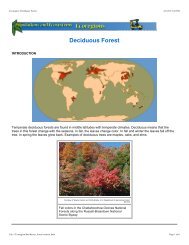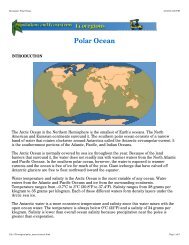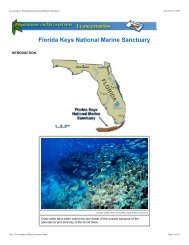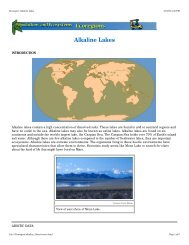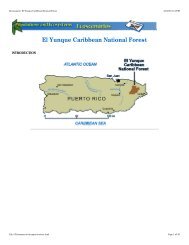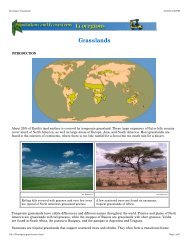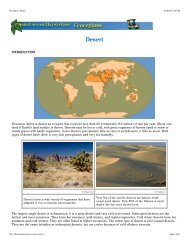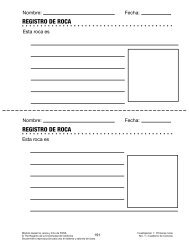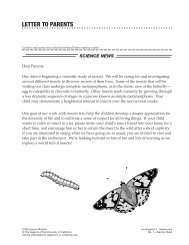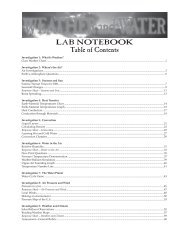Ecoscenarios Combined - FOSSweb
Ecoscenarios Combined - FOSSweb
Ecoscenarios Combined - FOSSweb
You also want an ePaper? Increase the reach of your titles
YUMPU automatically turns print PDFs into web optimized ePapers that Google loves.
Ecoscenario: Monongahela National Forest<br />
4/16/03 3:20 PM<br />
The U.S. Forest Service's mission was to promote the most beneficial use of the forest rescources without damaging the<br />
native environment. Prior to the creation of the National Forest Service, most forests were harvested for the large trees that<br />
yield the most lumber. Smaller, immature trees were cut to make removal of the larger trees easier and were left to decay<br />
where they fell. Most logging operations began at the mouth of a river and worked upward, toward the headwaters. It was<br />
believed that, by the time the operation reached the headwaters the forest at the mouth would have regenerated. But as<br />
logging operations became bigger and more efficient at removing trees, many watersheds were completely logged before<br />
any regrowth had occured.<br />
The Monongahela area was covered with virgin spruce forest, mixed with hemlock, white oak, and poplar prior to logging.<br />
Today, the forest is primarily a second-growth forest of more than 75 species of trees, such as black cherry, oak,<br />
hemlock, and poplar, with some spruce.<br />
Monongahela National Forest is a popular vacation area. It is within a day's drive of one-third of the population in the<br />
United States and is a popular destination for camping, hiking, fishing, and hunting. Elevations in the rugged terrain range<br />
from 274 to 1482 meters (899 to 4861 feet). The headwaters for the Monongahela, Potomac, Greenbrier, Elk, Tygart, and<br />
Gauley Rivers lie within the forest.<br />
The forest also provides jobs and income to the local economy through the lumber industry, as well as coal mining and<br />
natural gas wells. Management of these natural resources is monitored by the U.S. Forest Service.<br />
ABIOTIC DATA<br />
The climate at Monongahela National Forest is characterized by warm summers and cold winters. In the summer, the<br />
temperature averages 19.7°C (67.5°F). In the winter, it drops to 1°C (33.8°F). Sometimes there is snow, but most of the<br />
precipitation falls as rain. The peak growing season is about 6 months long, slowing in the fall and winter due to cold<br />
temperatures and snowfall.<br />
There are no distinct wet and dry seasons. A rain shadow affects the amount of rain received on the west and east sides<br />
of the forest. Storms usually come from the west, dropping most of their moisture as they rise over the Allegheny<br />
Mountains. As the storm passes over the eastern half of the forest, two-thirds of the moisture has already fallen as rain. In<br />
some years, the western half of Monongahela National Forest may receive as much as 150 centimeters (60 inches) of<br />
precipitation, while the eastern half receives only 75 centimeters (30 inches).<br />
file:///Ecoscenario/mononga/content.html<br />
Page 4 of 11



